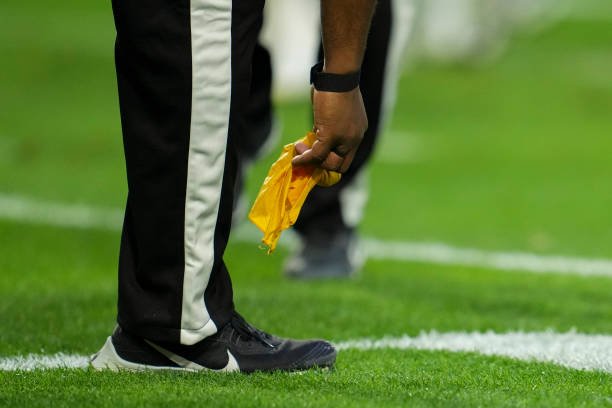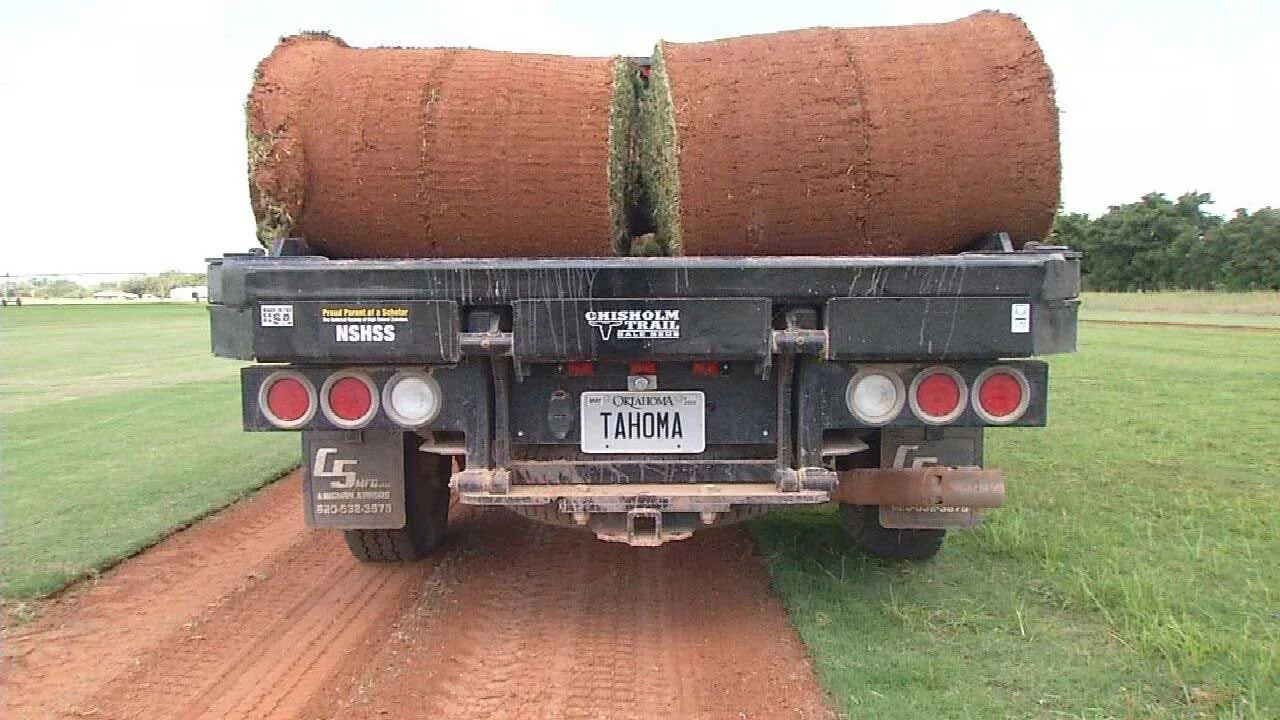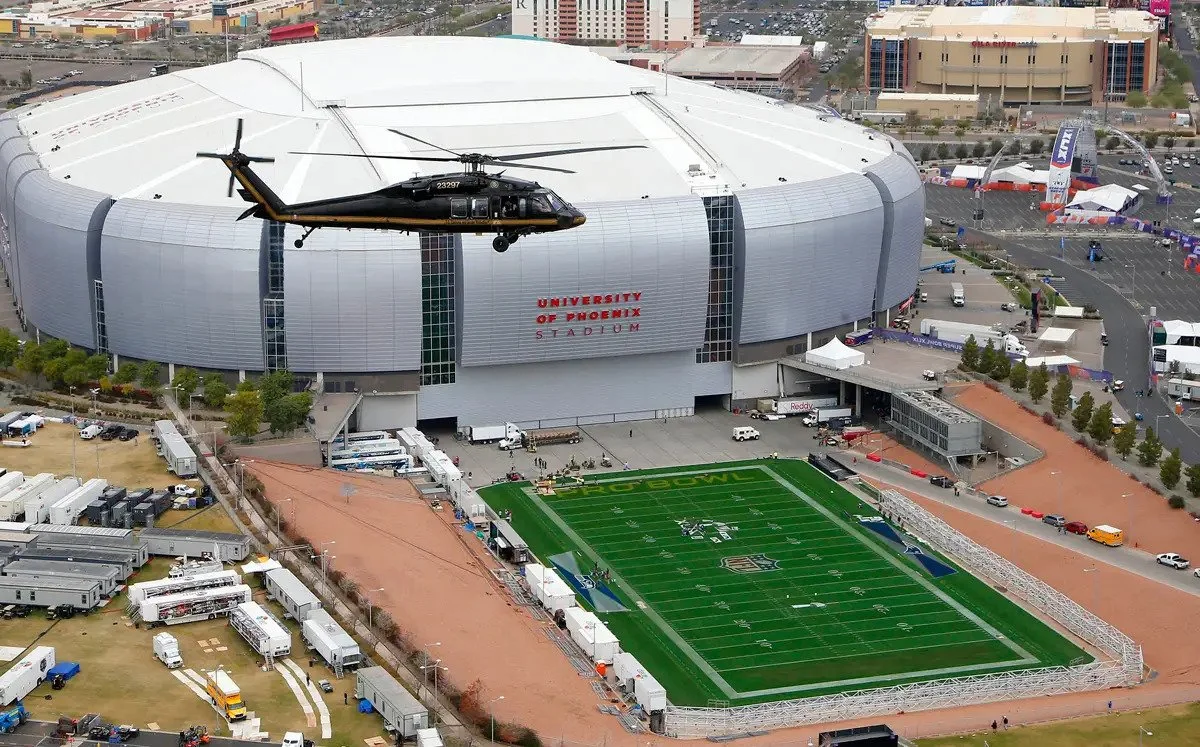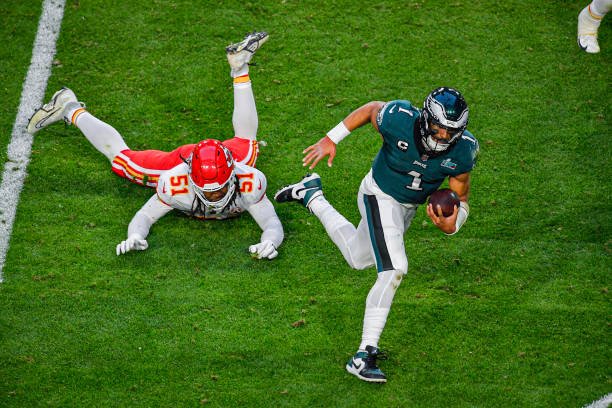The Slippery Slope of Tahoma 31 : An Analysis of Why Players Kept Falling During Super Bowl LVII
The biggest impact on the field during Super Bowl LVII was not a player’s peak, not an excellent play: but the field itself.
Since 2006 – the grass Tahoma 31, which was used in Super Bowl LVII, has been engineered. Scientists at the Oklahoma State University (OSU) have literally watched grass grow to curate the perfect strain. But with all that work, what went wrong on game day?
To understand what went wrong, you must know the journey of the plant from before its inception. Researchers at OSU have been known for their skill and expertise in creating strains of turf over the past couple decades, and they decided to compile their knowledge into a novel grass.
During Super Bowl LVII, an bends over to retrieve a yellow flag on the field between the Kansas City Chiefs and the Philadelphia Eagles on February 12th, 2023 in Glendale, Arizona. The Chiefs won 38-35. (Photo by Cooper Neill/Getty Images)
Students of graduate and undergraduate variety in the Department of Plant and Soil Sciences, the Department of Entomology and Plant Pathology, and the Department of Horticulture and Landscape Architecture all gather to create the best grass for any need.
Their strains of Latitude 36 and NorthBridge Bermuda are successful and popular for their disease resistance, cold hardiness, and a carpet-like texture that is able to recover quickly from divots. These facets of the grass make them great for a football field, and the Kansas City Chief and Baltimore Ravens use OSU’s grass because of it.
While that vegetation information sounds great, it was not good enough for OSU. They wanted to get better.
The Oklahoma Turfgrass Research Foundation working to prepare for the 66th Annual Oklahoma Turf Conference and Trade Show in 2011. (Photo retrieved from Oklahoma Farm Report)
Their next project had lofty goals and they were willing to take the steps to reach them. Thus – through the combination of China Bermuda grass and African Bermuda grass, the hybrid grass Tahoma 31 was born.
Professor Yanqi Wu in the Department of Plant and Soil Sciences at OSU says that, “through the National Turfgrass Evaluation Program, select varieties were studied at 17 national locations during a five-year period.”
A OSU truck filled to the brim with rolled Tahoma 31, transporting it from the field. (Photo retrieved from News9).
This process singled Tahoma 31 as one of their best products yet. According to Chad Adcock, the vice president of business development at Sod Production Services, Tahoma 31 is the most cold-tolerant variety that has been available commercially.
It is particularly desirable for residential lawn owners. The grass has a high drought tolerance a short root zone. These roots allow it to be planted without much topsoil, and also make it easier to be harvested and transported.
A person installing grass on a lawn. (Photo by Alexander Raths/Shutterstock)
Tahoma 31 is a great choice too for its quick recovery after winter, where it shows green by March 12th. The low maintenance and high durability of the plant make it a excellent for many applications and seemingly football as well, although not always.
With the grass created and tested, all that’s left is to simply create an entire football field.
FieldTurf specialists installing a synthetic turf in an Ohio Stadium. (Retrieved from The Blade)
The NFL Field Surface Director, Nick Pappas, said, “with the help of about 30 people, more than 600 rolls of sod that were 40-feet long and 3.5-feet wide and weigh about 1,600 pounds were laid on the field tray, which can be rolled outside of the stadium to be watered, get sun, and treated – and can also be rolled back inside during inclement weather, which has been crucial.”
Many hours of care went into the fields creation, and Tahoma 31 is ready for gameday.
Prior to a NFL Pro Bowl held at the University of Phoenix stadium, the grass field is brought outside of the enclosed stadium to get plenty of sunlight, preparing for the big game. (Retrieved from Times Union)
Players began the game, and players began slipping. Chiefs quarterback Patrick Mahomes slipped while running up the field. Skyy Moore, Chiefs receiver, stumbled during a jet sweep. Jake Elliot of the Philadelphia Eagles turned his ankle during a kickoff attempt, nearly getting seriously injured. Isiah Pacheco even lost his footing while dancing proceeding his touchdown.
Chiefs defensive lineman Frank Clark said that, “the field was kind of terrible.” Players just had to deal with it though, and many change cleats multiple times to try to combat this.
Jordan Mailata, Eagles offensive lineman, may have had the biggest criticisms of the field saying that, “it was just slick. You couldn’t anchor. You had to get your whole foot in the ground. If you try and use your toe, you’d slip right away. It was like a water park out there, and we were playing on grass.”
Chiefs defensive end Mike Danna falls in attempting to catch Jalen Hurts, Eagles Quarterback during the second quarter of the Super Bowl LVII. (Photo by Rich Sugg/The Kansas City Star/Tribune News Service via Getty Images)
Fans and players took to social media after the game to share their complaints. It gained OSU attention quickly and they attempted to maintain their credibility for the grass.
OSU made a statement that, “while OSU scientists developed and patented Tahoma 31, they had no role in creating or preparing the field for Super Bowl LVII.”
Professor Wu also said in a Twitter thread in response to questions of what happened, “I don’t know. The grass has been tested in more than 250 environments.”
Boone Pickens Stadium installing a new turf. (Retrieved from Tulsa World)
They were not able to completely point fingers at a specific problem, and although there could be bias involved, they claimed that it was not their fault.
The university said that the problem may be that, “Tahoma 31 was used for the base layer, but the field also was seeded with a top layer of ryegrass, which has slick leaf surfaces when damp. That and other factors may have contributed to traction issues during play.”
There has been no official comment by the NFL.
Professor and Dr. Yanqi Wu with his prized Tahoma 31 in 2006. (Photo retrieved from Oklahoma State University)
Tacoma 31 is used in many places for its quality and resistance. It is installed in over 50 football fields, golf courses, soccer complexes and baseball parks. Used as the turf grass of the USA Softball Hall of Fame field, the U.S. capital lawn, and many university facilities. The grass is even in the Philadelphia Eagles’ and the Arkansas Razorbacks’ stadiums.
This specially cultivated grass has proven that it is strong and resistant to a lot. While we may never know the true reason it failed to provide during Super Bowl LVII, it is important to trust the science.








